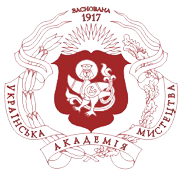Requirements for article design
Editors approve electronic articles meeting journal remit if they have not been published (in any language) individually or as part of another manuscript and are not reviewed in another journal, conference proceedings, collective monograph, etc.
Authors are responsible for the accuracy of facts, quotes, and references.
A scholarly article should contain the following structural elements (in bold type):
· problem statement;
· analysis of recent research and publications;
· article’s goal;
· basic material presentation;
· conclusions and prospects for further research.
The UDC index is in the upper left corner of the first page. The author identifies the UDC index independently (or with the help of library staff).
Information about the author (-s) is presented as follows:
- the author’s full name;
- ORCID ID (a personal code which can be generated following the link https://orcid.org/register);
- academic degree and/or academic (honorary) rank;
- for postgraduate students – department, research advisor (full name, academic degree and/or academic (honorary) rank);
- affiliation;
- city, country;
- e-mail.
The article title should be brief (up to 14 words) and render its content aptly. The title shall not contain reductions and abbreviations.
Abstract (in Ukrainian and English) should meet the article’s structure: problem statement, purpose, and research findings. The minimum volume of the Ukrainian abstract is 600 printed characters (incl. spaces); the minimum volume of the English abstract, involving the author’s surname and name, the article title and keywords, is 1800 printed characters (incl. spaces).
Keywords: 3-7 words or colocations.
Bibliography. The list’s bibliographic description is designed using the National Standard of Ukraine DSTU 8302:2015 “Information and documentation. Bibliographic reference. General provisions and compilation rules”. The list of references should contain DOI (digital object identifier) if any.
Editors encourage the citation of articles published in the Collection of Scholarly Works “Ukrainian Academy of Art”.
Attention! The Collection of Scholarly Works “Ukrainian Academy of Art” rejects the articles which refer to the manuscripts of Russian authors and sources published in RF (Resolution of the Cabinet of Ministers of Ukraine No. 355 as of March 24, 2022 “On Denunciation of Agreements in the field of Education and Science with the Russian Federation”).
In-text references are designed following DSTU 8302:2015. The links in the text are formatted as follows: [4, p. 125], where 4 is the serial number of the source in the list, 125 is the page number. References to several sources: [4, p. 125; 6, p. 102].
References. At the end of the article, there is a separate block of transliterated and translated English version of literary sources meeting APA style (American Psychological Association).
To transliterate Ukrainian-language sources, it is recommended to use standard Ukrainian transliteration. After the transliterated name of the source, its English translation is additionally provided in square brackets. The publisher’s name (journal, collection, etc.) is presented in the same way. At the end, the source language is indicated in square brackets in Latin, e.g., [in Ukrainian]; [in Chinese]. The references list fully duplicates the Ukrainian-language bibliography list regardless of whether it contains English-language sources.
Examples of compiling sources by link.
Supporting data is submitted as separate files in one of the following formats: TIFF, PDF, JPG. Captions to illustrations are in Microsoft Word format following the numbering of supporting data (il. 1, il. 2 …). In-text references to illustrations are put in square brackets: (il. 1), (il. 2), etc.
Nota bene! In the caption to each illustration, the author has to indicate its origin or give permission for publication from the rightsholder.
Example of the caption to illustrations:
Ill. 1. Vasyl Korchovyi. Confident. Gabro. 170 cm. 2021 [3, 123].
Each table should have a number and a name.
The article is drawn up using Microsoft Word (Times New Roman 14, line spacing - 1.5).
All margins - 2 cm. Paragraph indention- 1.25 cm. Pages are not numbered.
The volume of the article is 10–18 pages (including abstracts, lists of references and supporting data).
Editors reject articles which do not correspond to the above requirements.



